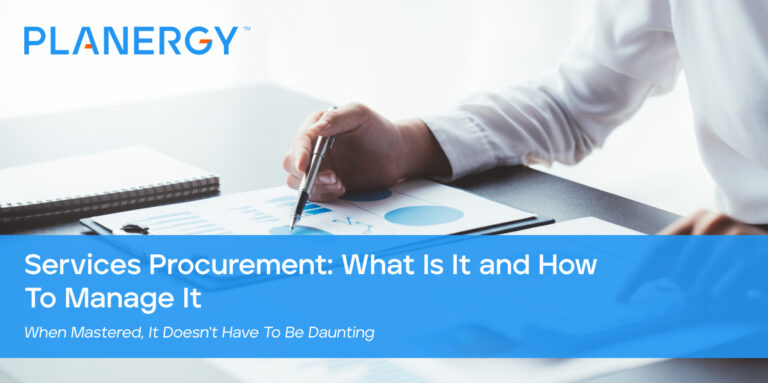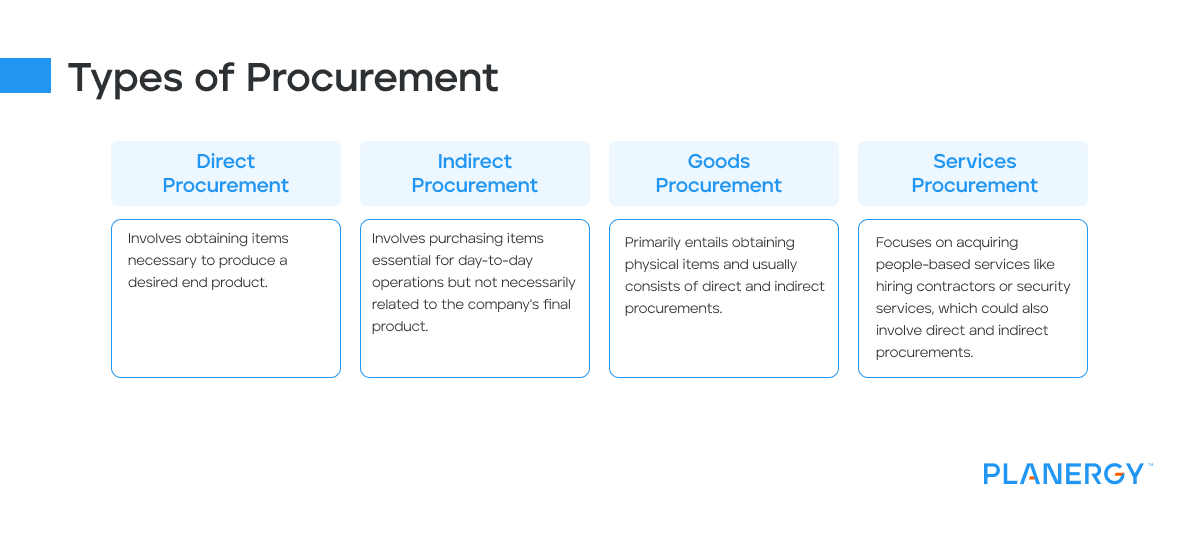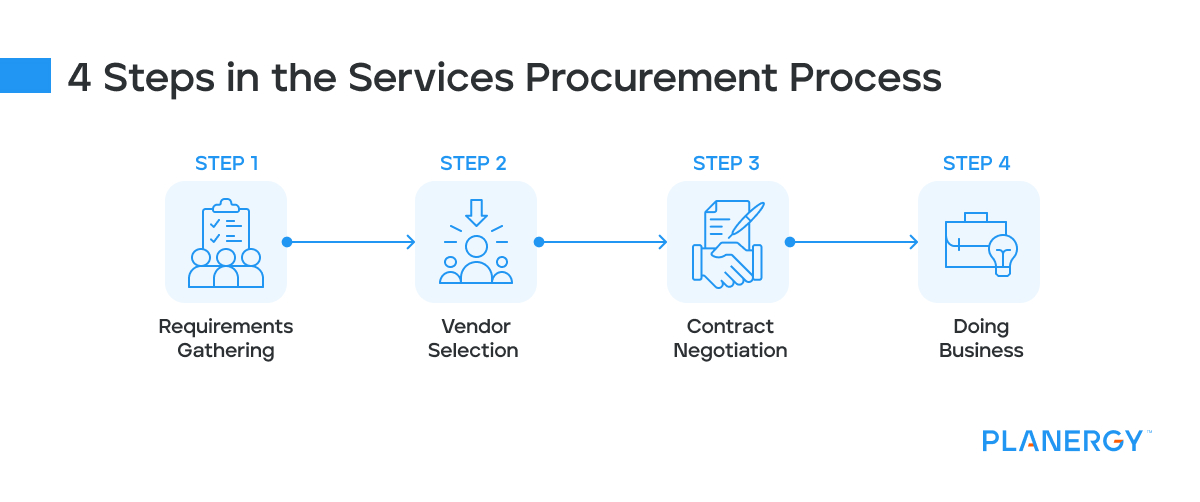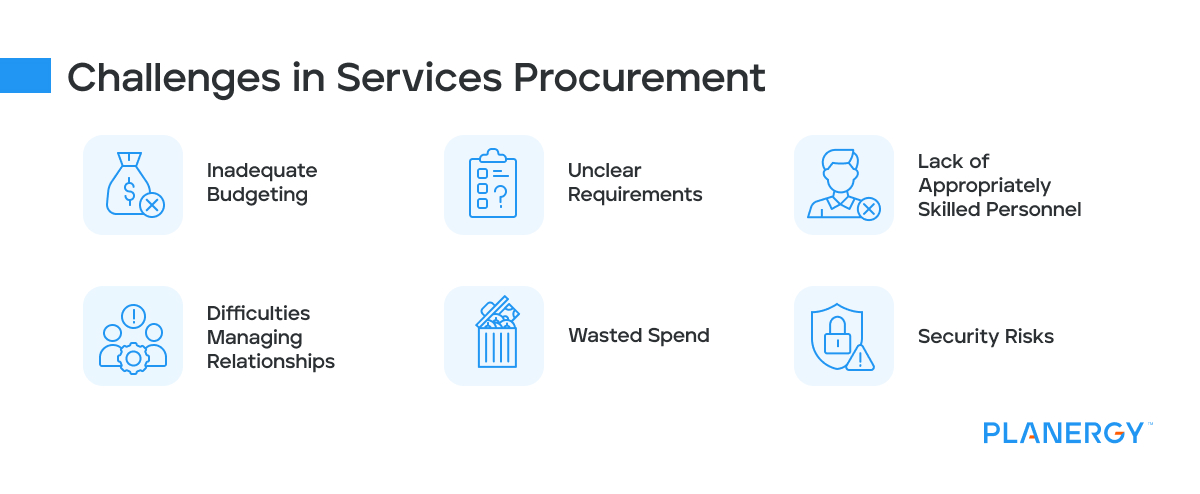Although many advantages are associated with procuring external services for business operations, organizations also face some common challenges during this process.
Inadequate Budgeting
Without a budget, a business may not be able to negotiate favorable terms with providers.
Without sufficient funds, businesses may be unable to pay for the necessary components of their service, such as technical support or maintenance fees, leading to reduced quality and performance.
Unclear Requirements
Without fully understanding what a business needs from the service they’re looking to procure, it’s easy for businesses to purchase services they don’t need or hire vendors that don’t have the necessary skills and resources to fulfill requirements.
That’s why it’s critical to have a comprehensive and detailed list of requirements before engaging with potential suppliers.
Lack of Appropriately Skilled Personnel
This can prevent businesses from finding the right providers.
Without the necessary expertise, businesses may be unable to evaluate and compare potential vendors correctly and make informed decisions.
Without the right level of skill in-house, businesses may not accurately define their requirements when engaging with potential vendors.
Difficulties Managing Relationships
Managing supplier relationships in services procurement can be difficult as several parties are involved, including the business and its vendors.
Without effective communication and collaboration between these parties, it may be hard for them to work together to meet the service requirement.
Maintaining strong relationships with vendors can be tough due to changing market conditions, increased competition, and different expectations from both sides.
Establishing clear objectives at the outset and constantly improving understanding and trust between the various parties is essential.
Wasted Spend
Without adequate supply chain management, organizations risk wasting a lot of money.
Oxford Economics and SAP research shows that external service providers account for 42% of external workforce spend.
Statista reports that approximately 31% of sourced projects are not completed on time, within budget, or do not meet the company’s original goals.
limited visibility into these service providers can wreak havoc. If nearly one out of every 3 projects goes south, that’s a lot of lost time (and money.)
Security Risks
Without effective oversight, organizations face increased security risks. In a world of digital transformation, service providers are often entrusted with sensitive data and customer information.
Organizations risk unexpected outages or data breaches if supplier compliance is not properly managed, especially when it comes to applicable regulations such as GDPR or HIPAA.









